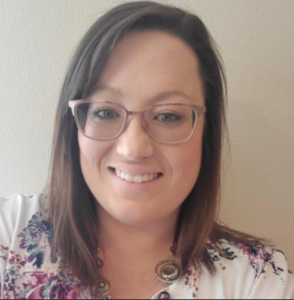
SPPH student Hailey Merrick completed a study last year that included survey data from more than 500 participants. The study, “Exploring the Impact of the Idaho Fit and Fall Proof™ Program on Feelings of Isolation and Loneliness Post-COVID-19 Pandemic” shows that the program provides an important sense of connection for senior citizens throughout Idaho.
The Idaho Fit and Fall Proof program engages participants in classes throughout Idaho, where they learn simple exercises to increase strength, balance and endurance. These exercises can help prevent accidental falls and tripping that can be associated with age.
One participant shared the following in their survey response: “When I started I couldn’t lift a cast iron skillet or balance with my eyes closed. Now I can.” While the number of survey participants provided a great deal of work involved in this study, Merrick found it moving to hear from the participants.
Merrick worked with the Center for the Study of Aging while working on the study and will graduate with a Master of Public Health degree in May 2024. Learn more about Merrick’s work in the following sections:
1. What originally prompted you to conduct this study?
2. What findings surprised you most or were most interesting to you?
We already had a hunch that this program was providing the social-emotional component based on the findings from the 2011 study that was completed, but we wanted to make sure the program was still reaching that level of community and comradery.
I was happy to see that there were so many people that engaged in the program more for the social aspect and seeing that the fall prevention physical activity was an added bonus. I guess you could say that was a surprise to me because the program was created to prevent falls.
3. What kind of difficulties did you face in getting more than 500 participants to respond to your survey?
The biggest hurdle I had in getting this many participants was getting the survey supplies out to the different health districts. It was challenging navigating purchasing supplies and sending them out to the districts with the limited resources that I had. I also wasn’t sure how many participants would actually participate and that made it difficult to know how much of the supplies to send to the health districts.
4. What did you enjoy most about working on this study?
I loved reading the comments about how this program makes a positive impact on these individual lives. Some of our participants do not have family or friends nearby and they go to these classes just for the social interaction.
It was also moving to hear how some of the participants rallied and supported each other through the COVID-19 pandemic. They continued to reach out to each other and make sure their needs were met. It is so beautiful to see the community come together and uplift each other.
5. What advice do you have for students interested in working on research that requires community and participant engagement?
One of the biggest things I continue to encourage anyone who will listen is to build your social network! I could not have had the success I did without the engagement of the District Coordinators and their willingness to distribute and collect surveys from the participants. After I sent them the supplies, they went to various classes and had the participants complete the survey to send back to me for evaluation.
I would also encourage people to give themselves grace during this process. It can be frustrating and overwhelming, but it will all work out in the end.
Learn more about Merrick’s study and the Fit and Fall Proof program from a recent Idaho Department of Health and Welfare blog post.